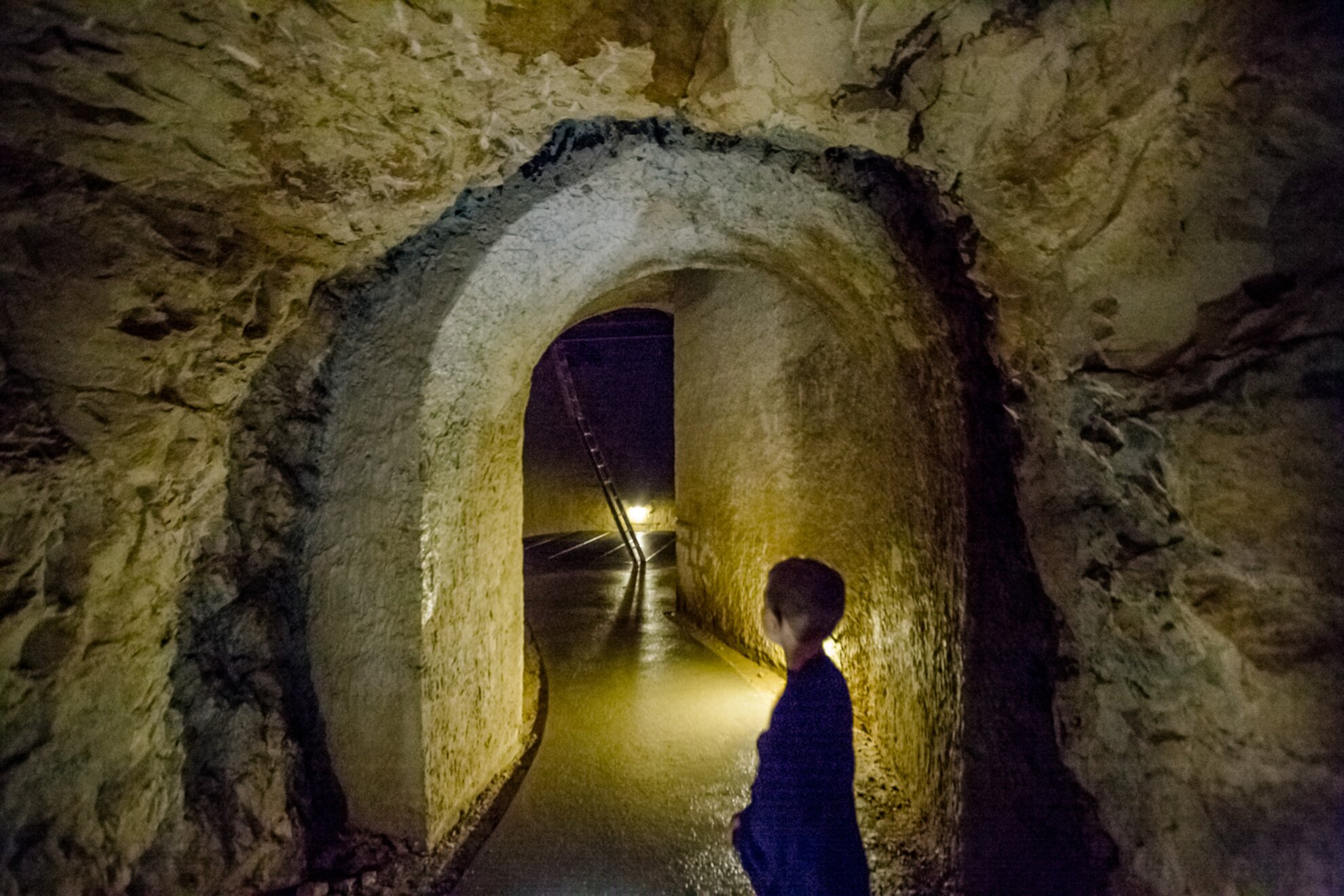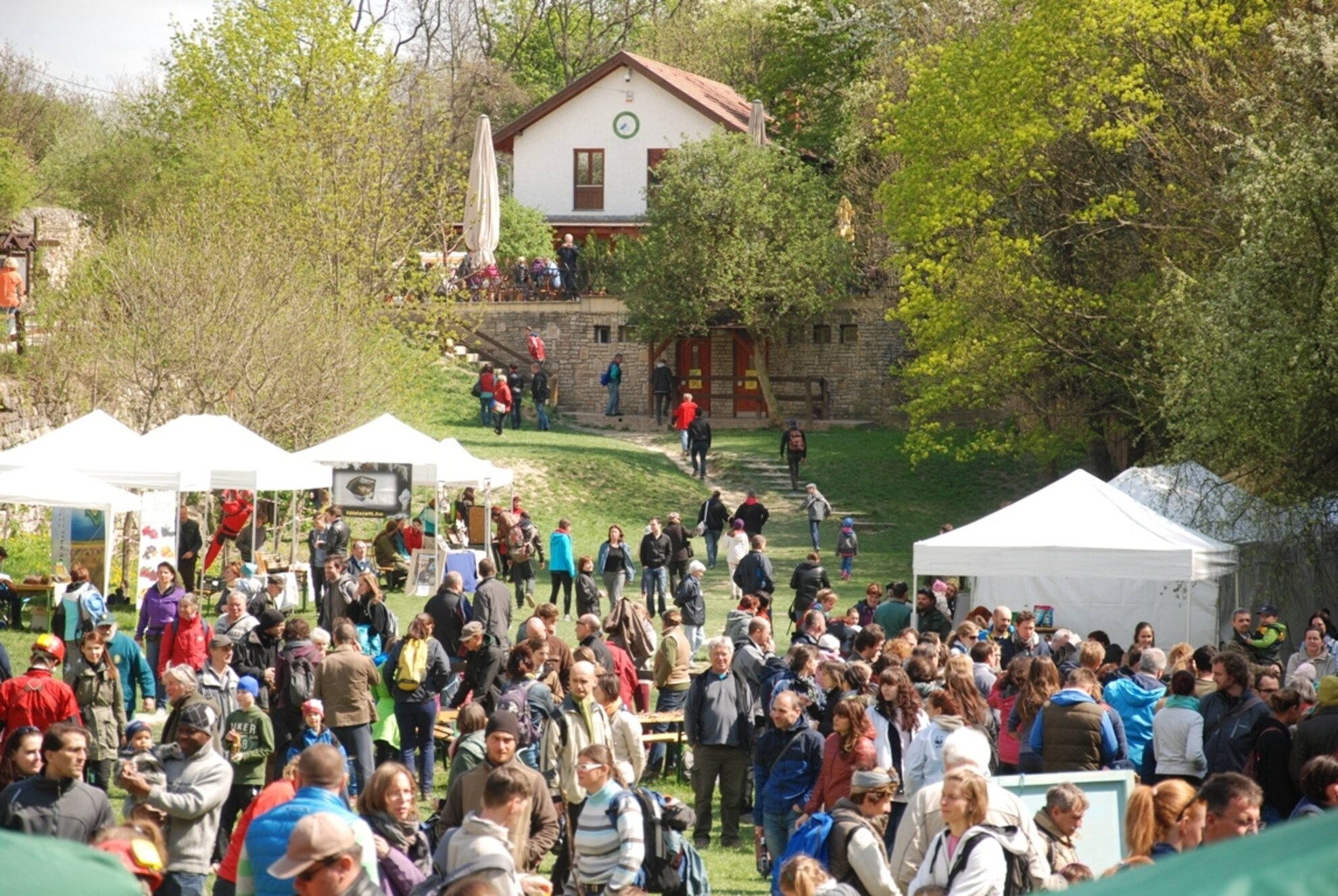The two most visitor-friendly caves in the system that even runs beneath Buda Castle are Szemlő-hegyi , tucked into the hillside above Kolosy tér in Óbuda, and Pál-völgyi in the Buda hills, within easy reach of each other. Both form part of the Duna-Ipoly National Park, and both have recently seen their facilities given an upgrade to attract more visitors. The tour of Szemlő-hegyi Cave was enlightening in more ways than one – not least when it came to recent renovation.
As we learned from cave manager Gyöngyvér Kunisch while we were being taken around, algae and ferns on the walls are ‘lamp flora’, formed from the warming effect and high humidity of the 20-year-old lamps down there. Tiny spores washed away by water can easily develop under ideal conditions, which is a normal process at the entrance due to the infiltration of natural light. “When I was a kid, the cave was illuminated with huge 500-watt spotlights – it was really warm, everything was growing around it,” says Gyöngyvér.
The walls have been cleared of such plant life by a special method used only in caves to prevent accidental damage to the rock. As hot-water processes played a role in their formation, there are no living beings in the Szemlő-hegyi and Pál-völgyi Caves – except for bats – but in the cold karst water of Abaligeti or Aggtelek caves elsewhere in Hungary, an amazing number of rare species need to be taken care of. In addition to cleaning, Budapest’s two caves have been given modern LED lighting, which will hopefully solve the problem in the long run.
Gyöngyvér took us 40 metres below the surface among the 40 million-year-old Eocene limestone blocks. It is no coincidence that the cave is referred to as the underground flower garden of Budapest, its shapely mineral deposits, pisolite rocks, formations reminiscent of cauliflower and roses, calcite plates, gypsum crystals and so-called Christmas trees offer a dazzling sight. A quarter of the 2,230 metres can be walked on, even with a wheelchair and pram, thanks to the smooth concrete cover.
Unlike Pál-völgyi Cave close by, here bats are not to be feared because the opening is not the natural entrance; cavers entered through another gap after miners accidentally discovered the cave while quarrying in 1930. Among the surrounding vineyards, villas had begun to be built in the 1920s with stones from these hills.
Below the old, buried entrance, you can still see the path called Needle Point, on which the thin explorer Mária Szekula managed to squeeze herself out. Thanks to her stunt, more sections of the cave were revealed. The 12-degree, dust-free, humid air is also good for respiratory diseases, and cave therapy meetings can be held with medical referrals from Szent János Hospital.
“Showing visitors the cave may always involve the possibility of damage, so we need to consider how we do this. The smartest thing is to do as little as possible,” is how another recent introduction, a short 3D film, begins. Most of the caves belonging to the Danube-Ipoly National Park are closed to the public, only research groups can visit.
A longer piece of work has just been completed in Szemlő-hegyi yet Gyöngyvér believes it there may still be an unexplored section, and research into the 32-kilometre-long Pál-völgyi system is currently underway, with further paths being discovered. Back in 1904, for example, only 1,200 metres had been discovered. It was thought that that was their extent – until research resumed in the 1980s.

Since the most beautiful parts cannot be visited without permission, they also wanted to show the layman how much beauty lies beneath the surface. That’s why the new short film was made about the caves in the national park closed off to the public – Mátyás Hill, Ferenc Hill or the water-filled János Molnár Cave. Here, the 3D technology really is justified because of the spectacle: what it is like to walk down closed, narrow passages and magical halls amid amazingly shaped, untouched mineral deposits and stone sculptures.

The exhibition space within the Szemlő-hegyi Cave has also been renovated, mainly with new elements created for children, such as a small cave where you can try out how to crawl and climb. The Kőpark nature trail at the top of the cave hill is another visitor attraction, where the visitor can see rock formations from 440 million years ago. In the quarry of the Pál-Völgyi Cave, security features, railings and retaining walls have been renovated, and a cave playground has also been established.
The two caves can now be visited with a combined ticket for 3,500 forints.
Szemlő-hegyi Cave
District II. Pusztaszeri út 35
Bus 29 from Szentlélek tér to Szemlő-hegyi-barlang
Pál-Völgyi Cave
District II. Szépvölgyi út 162
Bus 65 from Kolosy tér to Pál-Völgyi cseppkőbarlang



